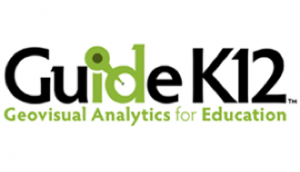Most administrators reach for test scores when they think of data-driven decision-making. With geovisual data, you can consider the demographics of your district.
In the Lake Oswego School District, we’re working hard to create an exceptional learning environment that meets the needs of all students. And one way we do that is by using data to support our decision-making.
Our teachers use the results of formative assessments to monitor their students’ progress and make sure they are on track toward meeting grade-level standards. We also use student achievement data to inform teachers’ professional learning and drive continuous improvement.
Our efforts aren’t confined to using classroom analytics, however. We are now deploying district-level analytics, including demographic information from our community, to anticipate future needs, plan ahead, and make the best decisions possible for our students and their families.
We were fortunate to be recognized by ZipRealty this past summer as a top-performing school district with affordable housing. This kind of recognition brings more interest from prospective families, and as families move into the district, we need to know where best to allocate our limited resources.
That’s why I’m excited about a new decision support tool we’ve just adopted called GuideK12. It’s an administrative decision support platform that allows us to overlay information from our databases onto a map of the district and then interact with the data. This lets us see the information through a whole new lens, adding another dimension to our strategic planning.
Here are three key ways that a geovisual support tool will benefit our district.
1. We can allocate resources more effectively.
We can use the software to visualize certain trends and patterns to anticipate future needs. For instance, we can see where our elementary students who struggle with math live, and we can assign an extra math specialist at the middle schools where those students are most likely to attend. This enables us to be proactive instead of reactive in addressing our biggest challenges.
2. We can plan more efficiently.
A couple of examples come to mind. We can draw a radius from any point in the district and determine the students living in that area to inform them of any emergency information needed. Secondly, if we were to add National Weather Service data on top of our student map during a weather-related emergency, we could see which schools and students would be most affected by the storm, and we could plan accordingly—such as figuring out the best locations for emergency shelters.
3. We can visualize the outcome of various choices.
We can run different scenarios to see how certain decisions would affect our community. Each scenario we run is stored in the software for future discussion. We can use this feature to make hard choices about sensitive subjects like school boundary changes with as little disruption as possible, reducing the emotion throughout our decision-making process. With a few mouse clicks, we can visualize the populations of students that would be affected, simply by drawing different boundary lines or making other changes.
Finding the ideal place for special programs that meet our students’ needs, understanding the shifts in our rapidly evolving demographics, analyzing the impact of various scenarios, and making smarter, more strategic decisions: All of these are now possible when we add a geographic element to our data use.
Being able to visualize such a wide variety information in real time will make us much more informed and efficient. Our teachers and administrators are excited about the possibilities for using data in much richer, more creative ways.
And expanding our thinking beyond student achievement data lets us use resources more effectively, and it allows us to be more proactive in our decision-making—which will serve us well as an evolving district in demand. Being able to see individual student information to help kids in the classroom is a high priority to ensure every student excels.
Heather Beck is superintendent of the Lake Oswego School District in Oregon.


